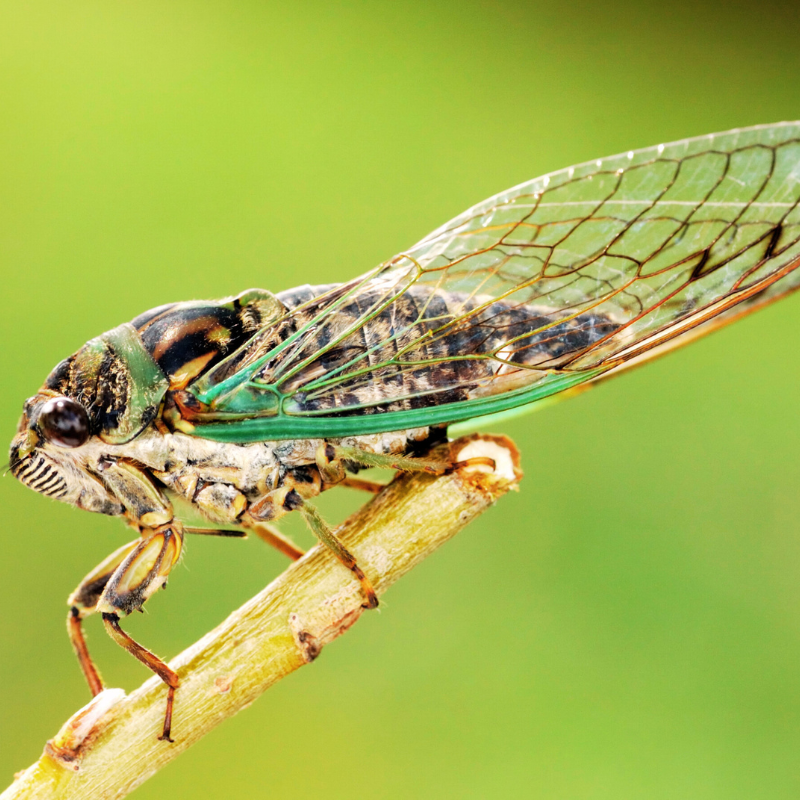
- AgValue Consulting
- April 16, 2025
- 7:21 pm
- 2 minutes
Bourbon Brood Cicadas Are Coming: What Kentucky Farmers and Landowners Need to Know
As highlighted in a recent article by Kentucky Ag Connection, Kentucky is bracing for the dramatic emergence of Brood XIV—the 17-year cicadas—this spring. Known by University of Kentucky entomologists as the “Bourbon Brood,” this particular periodical emergence will be especially dense across central and eastern Kentucky, presenting a rare natural event with very real implications for certain agricultural operations.
At AgValue Consulting, our job is to interpret how events like this can impact landowners, agricultural operations, and ultimately, property valuations and farm appraisals. While cicadas may not bring the kind of destruction associated with pests like locusts or rootworms, they can cause measurable effects on specialty crops, young orchards, and certain nursery operations.
Why This Matters for Kentucky Agriculture
While Brood XIV cicadas don’t harm humans or animals, they do lay eggs in small branches of trees and woody plants. For many landowners, that creates concern, particularly in operations with:
Young fruit orchards
Nut trees
Vineyards and ornamental nurseries
High-value landscaping operations
UK entomologist Jonathan Larson notes that the egg-laying process can cause branches to splinter and die back—this is especially true in young or recently planted trees. While the damage is rarely fatal to a tree, it can slow growth, impact yields, and in cases where aesthetics or branch formation are critical (as in vineyards or nursery trees), the damage can affect marketability and operational income.
For property owners with investments in specialty crops or orchards, this could affect year-end cash flow projections—which are often a component in income-based farm valuation models.
Protecting Farm Assets and Agricultural Value
Larson recommends using cicada netting for vulnerable trees and shrubs starting in May when the loud singing begins—signaling mating season. This relatively inexpensive mitigation strategy may not eliminate the risk but can preserve the integrity of young crops and help avoid unnecessary yield loss or cosmetic damage.
We also advise clients to consider this potential emergence in short-term cash flow planning for operations that rely heavily on young trees or perennials.
Valuation Implications from Cicada Emergence
While cicadas do not have a long-term impact on cropland values or traditional row crops, their presence can:
Introduce near-term operational setbacks in orchard and nursery valuations
Require adjusted forecasts for this year’s production in certain perennial crops
Create inspection variables during farmland appraisals where fruit or ornamental trees are a major revenue component
In counties expecting the highest cicada density—particularly central Kentucky regions like Fayette, Clark, and Bourbon Counties—landowners and farm managers should take proactive steps to mitigate risk and document any impact for future assessments.
AgValue Consulting’s Perspective
Events like the 17-year cicada emergence are rare—but so is the specialized knowledge required to interpret their effects on land value, crop performance, and appraisal outcomes. At AgValue Consulting, we understand how seasonal and cyclical events intersect with valuation models and farm profitability.
If you operate a vineyard, orchard, nursery, or are invested in high-value young trees, contact us for a property review. We’ll help you assess any risks, document effects for future appraisal references, and ensure your land value reflects both the temporary and long-term realities of farm production.
📞 Reach out to AgValue Consulting today—your trusted source for agricultural appraisals across Kentucky and the Southeastern U.S.
